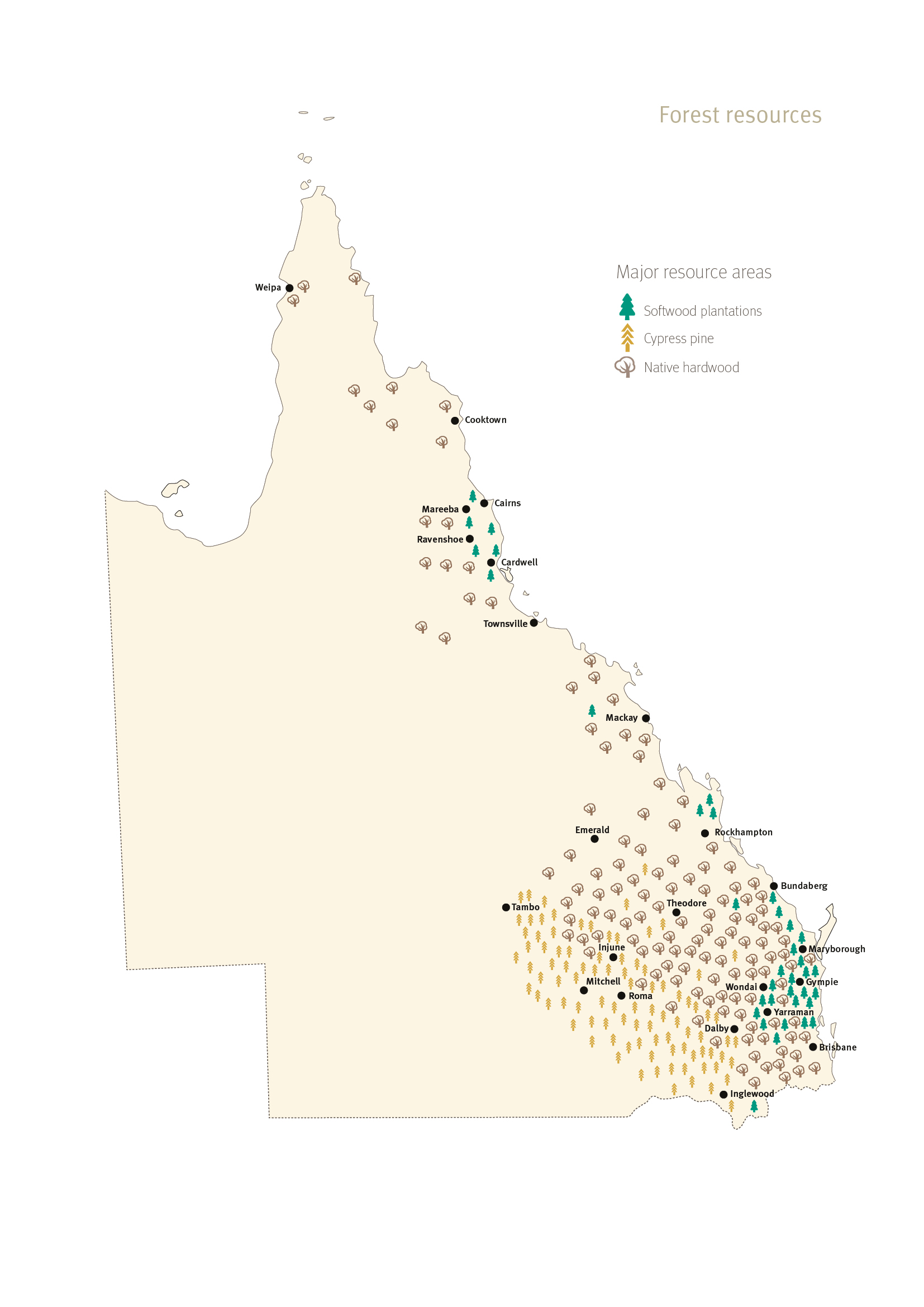Queensland’s plantation industry was initially established to replace softwood imports, create employment, contribute to the growth of regional communities and deliver a commercial return.
The majority of Queensland’s 206 700 hectare plantation estate was established by the Queensland Government in various stages between 1930 and 1980. This initiated development of a significant downstream processing sector, which now includes world class sawmills and other processors supplying domestic and international markets.
More recently there has been a move away from government ownership, with most new plantations being established by private companies. In 2010, the Government-owned Forestry Plantations Queensland was sold to a private company, Hancock Timber Resource Group, and the plantations are managed by
HQPlanations. The Queensland Government is no longer involved in plantation ownership, but continues to encourage the development of the private plantation industry.
Plantation size and location
The latest spatial statistical date on Queensland's forest estates can be found in DAF's Queensland Plantation Forestry Estate Report 2021.
Most of Queensland’s timber plantations are located on the coastal strip between Brisbane and Maryborough. However, land in this area is now in high demand, and generally too expensive to support new timber plantations. Most of the plantations established in the last 15 years have been in the inland Burnett centred around Kingaroy, Central Queensland from Bundaberg to Rockhampton, and in North Queensland from Ingham to Cooktown.

Source: Map courtesy of the Queensland Department of Agriculture and Fisheries.
Types of plantation trees
Queensland’s mature plantations, which support our significant processing sector, are predominately softwood - a combination of exotic pines (Slash Pine, Caribbean Pine, Slash / Caribbean Pine hybrids and some Radiata Pine) and native Hoop Pine.